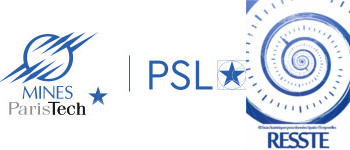Global Climate Models are the main tools for climate projections. Since many models exist, it is common to use Multi-Model Ensembles to reduce biases and assess uncertainties in climate projections. Several approaches have been proposed to combine individual models and extract a robust signal from an ensemble. Among them, the Multi-Model Mean (MMM) is the most commonly used. Based on the assumption that the models are centered around the truth, it consists in averaging the ensemble, with the possibility of using equal weights for all models or to adjust weights to favor some models.
In this paper, we propose a new alternative to reconstruct multi-decadal means of climate variables from a Multi-Model Ensemble, where the local performance of the models is taken into account. This is in contrast with MMM where a model has the same weight for all locations. Our approach is based on a computer vision method called graph cuts and consists in selecting for each grid point the most appropriate model, while at the same time considering the overall spatial consistency of the resulting field. The performance of the graph cuts approach is assessed based on two experiments: one where the ERA5 reanalyses are considered as the reference, and another involving a perfect model experiment where each model is in turn considered as the reference.
We show that the graph cuts approach generally results in lower biases than other model combination approaches such as MMM, while at the same time preserving a similar level of spatial continuity. Beyond the interest of the graph cuts method demonstrated here, our results show the general need to consider that biases are location-dependent, and indicate that this spatial component can be used to improve the combination or weighting of models.

 PDF version
PDF version
